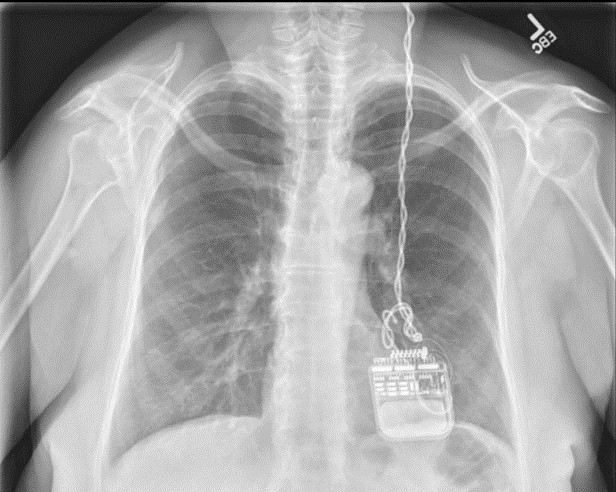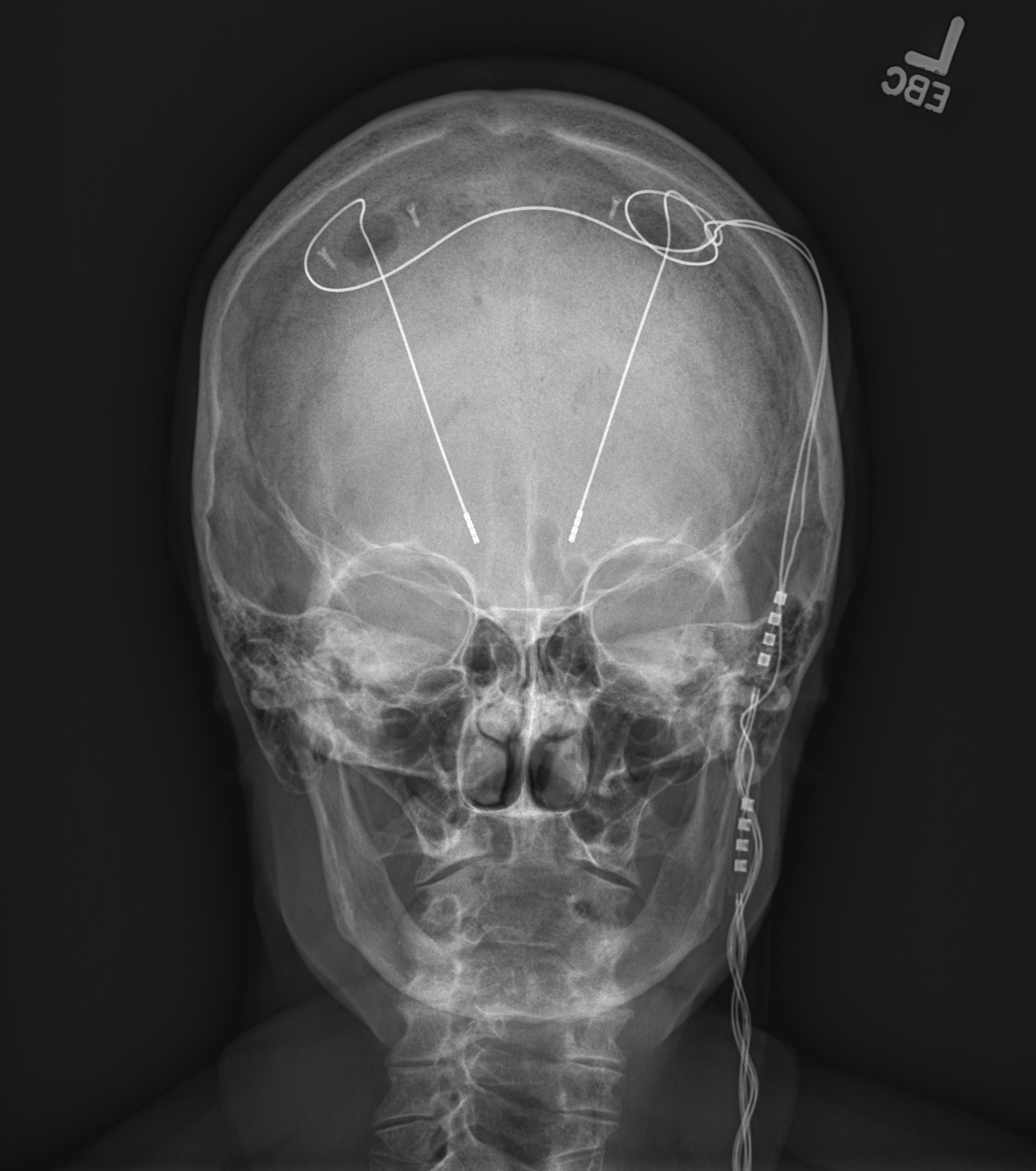Category: Surgical Therapy: Parkinson's Disease
Objective: We describe a case of Twiddler’s syndrome in a patient who underwent DBS surgery.
Background: Twiddler’s syndrome was first described in 1968 in cardiac pacemakers [1]. It has since been reported in patients undergoing deep brain stimulation (DBS) as well [2, 3]. This rare complication occurs due to flipping of the IPG within the subcutaneous pocket spontaneously or purposely.
Method: A 61-year-old woman with a 10-year history of Parkinson’s disease developed motor fluctuations and levodopa-induced dyskinesias, which persisted despite adjunctive therapies. She underwent DBS surgery with electrodes implanted into bilateral subthalamic nuclei with a left dual channel implantable pulse generator (IPG). At initial programming her tremor and rigidity were significantly improved. After 2 weeks, she reported worsening tremor and rigidity in her right arm, and she complained of her IPG “twisting” spontaneously when she would lay on her side. On interrogation, left STN impedances were low at all contacts. Radiographs showed significant coiling of DBS extension leads [figure1, figure2].
Results: She underwent an emergent revision. The IPG was found to be highly mobile in a subcutaneous pocket and her leads were twisted. The extension leads were replaced and the IPG was secured beneath the pectoralis fascia. At follow up, her tremor was improved, and impedances were normal. She has continued to have excellent control of her symptoms without further complications.
Conclusion: Twiddler’s syndrome is a rare but serious complication of DBS. Two large reviews reported an incidence of about 1% [4, 5]. Re-emergence of symptoms, discomfort at the IPG site or abnormal impedances should prompt radiographic investigations. Twiddler’s syndrome may cause fracturing of the extensions or the distal part of the electrode and might also cause upward displacement of the lead [2, 4]. Predisposing factors include psychiatric disorders, advanced age, obesity and female gender [2]. Our patient’s BMI was 24 and she had a normal pre-op neuropsychological evaluation. In this case, the IPG was secured underneath the pectoralis fascia. Suturing the device to muscle and limiting pocket size may limit its occurrence [6]. Dual anchoring of the IPG may also lower the risk of Twiddler’s syndrome [5]. The use of DBS is expanding in the fields of movement disorders and epilepsy. Therefore, neurologists and neurosurgeons need to be aware of this rare cause of DBS dysfunction.
References: 1. Bayliss CE, Beanlands DS, Baird RJ. The pacemaker-twiddler’s syndrome: a new complication of implantable transvenous pacemakers. Can Med Assoc J. 1968;99(8):371-3. 2. Gelabert-Gonzalez M, Relova-Quinteiro JL, Castro-Garcia A. “Twiddler syndrome” in two patients with deep brain stimulation. Acta Neurochir (Wien). 2010;152(3):489-91. 3. Jackowiak E, Patil PG, Chou KL. The Deep Brain Stimulation “Twiddler Syndrome”. JAMA Neurol. 2019;76(5):620. 4. Burdick AP, Okun MS, Haq IU, Ward HE, Bova F, Jacobson CE, et al. Prevalence of Twiddler’s syndrome as a cause of deep brain stimulation hardware failure. Stereotact Funct Neurosurg. 2010;88(6):353-9. 5. Sobstyl MR, Zabek M, Brzuszkiewicz-Kuzmicka G, Pasterski T. Dual Anchor Internal Pulse Generator Technique May Lower Risk of Twiddler’s Syndrome: A Case Series and Literature Review. Neuromodulation. 2017;20(6):606-12. 6. Benezet-Mazuecos J, Benezet J, Ortega-Carnicer J. Pacemaker Twiddler syndrome. Eur Heart J. 2007;28(16):2000.
To cite this abstract in AMA style:
V. Shivkumar, J. Adams. Twiddler’s Syndrome in Deep Brain Stimulation [abstract]. Mov Disord. 2020; 35 (suppl 1). https://www.mdsabstracts.org/abstract/twiddlers-syndrome-in-deep-brain-stimulation/. Accessed April 2, 2025.« Back to MDS Virtual Congress 2020
MDS Abstracts - https://www.mdsabstracts.org/abstract/twiddlers-syndrome-in-deep-brain-stimulation/


